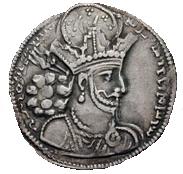Iraq and the Jewish People: Sassanian Rule and the Exilarchate
Part VI
Parthian rule in the region ended in the year 227, roughly at the same time that the Mishnah was edited in Israel. The Babylonian Talmud, therefore, was developed under Sassanian rule, the successor to Parthian rule. During the Hellenistic period, there were considerable attempts to Hellenize the area. Both the Aramean nation, a pagan group, and the Jews were set against the Hellenizing forces. Ctesiphon, the seat of the Sassanian rulers, was not Hellenized.
The Sassanians dominated the city of Ctesiphon until the Moslem Conquest. Thus the Jews lived under the Sassanian Empire, which ruled over Iraq and Iran as we know them today from Iraq. (Some would even include Iraq of the Talmudic period as part of Iran, as it was dominated by Persian forces.)
The society was a highly developed one. In the year 200 the exilarchate came into effect. It was a form of self-government under which Jews were dealt with as a community. The exilarch collected taxes, controlled the system of justice, and regulated all of the Jews’ activities.
The exilarch, known in Hebrew as the Resh Galuta, had a complex relationship with the rabbis. At this time, the Mishnah had already reached the region. A whole class of rabbis was spreading rabbinic Judaism. While mention is made of some elements of oral law in the Prophets and other books, it is unclear what the state of the oral law was in Biblical times; however, it is clear that the biblical Judaism that had once existed was, at this time, becoming “rabbinicized.”
By the year 200, the rabbis were a major force. Twice a year, a study event called the “yarchei kallah” was held, extending an entire month. Babylonian agricultural activity was regulated by seasons, and irrigation came from the rivers. Talmudic law pertains to water rights and distribution, swamps and land, clearly dealing with questions prevalent in Babylonia at the time.
Jews entered all professions; they dealt in international trade and were tenant farmers on the land of rich Jews and non-Jews. It is clear that Jews interacted with their non-Jewish neighbors, based on mentions made of Babylonian superstitions and culture. However, Jews were the main population in the Babylonian area. Estimates of the Jewish population are as high as a million and a half.
A balance of power existed between the exilarch and the rabbis. The rabbis provided the judges who were appointed by the exilarch. Often the exilarch and rabbis disagreed on how far to bend politically and religiously toward the Sassanian rulers. Some rabbis were close with the Sassanian rulers, such as Shmuel and Shapur I, known as Shvur Malkah in the Talmud (not to be confused with Shapur II and Shapur III).


Leave a Reply